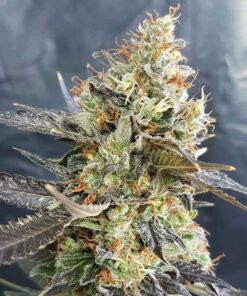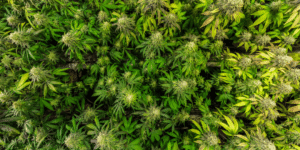Cultivation
The Essentials of Cannabis Seed Nutrition
Understanding and catering to the nutritional needs of cannabis seedlings not only paves the way for a great harvest but also maximizes the genetic potential of the plants. In this beginner’s guide, we delve deeper into the nuances of cannabis seed nutrition, focusing on the critical stages of a plant’s early life and the actions growers must undertake to ensure robust growth and development.
Contents
Cannabis Seed Nutrition: Different Seedling Stages and Their Requirements
Germination Stage: At this initial stage, seeds require moisture, warmth, and oxygen to sprout. Nutritional needs are minimal since the seed contains enough energy to support the initial growth.
Seedling Stage: Once the cotyledons (first leaves) appear, your plant will start photosynthesizing, necessitating light alongside a gentle introduction of nutrients, particularly nitrogen, to support foliage growth.
Early Vegetative Stage: As the plant develops true leaves, the demand for macronutrients increases, with a focus on nitrogen for leaf growth and phosphorus for root development.
Shop Autoflowering SeedsAutoflowering, Regular, and Feminised Cannabis Seeds
Autoflowering cannabis plants are known for their ability to flower based on age, rather than the light cycle. This trait makes them relatively easy to grow, especially for beginners or those looking for a quick turnaround. In terms of nutrition:
- Reduced Nutrient Needs: Autoflowering plants generally have a smaller size and a faster growth cycle than their photoperiod counterparts. As a result, they tend to require fewer nutrients overall.
- Sensitivity to Overfeeding: Due to their compact nature and rapid lifecycle, autoflowers can be more sensitive to nutrient concentrations. Overfeeding can easily lead to nutrient burn.
- Balanced Feeding Regime: Autoflowers perform best with a balanced, lighter feeding regime that supports their growth without overwhelming them. They benefit from lower nitrogen levels during their flowering stage compared to regular or feminized seeds.
Regular cannabis seeds produce plants that can be either male or female, with their sex typically revealed during the flowering stage. Their nutritional needs are more traditional and can be adjusted based on the plant’s sex and stage of growth:
- Variable Nutrient Requirements: Male plants, which are often destroyed to prevent pollination of female plants, generally require fewer nutrients than female plants that are kept for bud production.
- Adaptability to Nutrient Levels: Regular seeds tend to be more adaptable to fluctuations in nutrient levels, although it’s still important to avoid overfeeding or underfeeding.
- Stage-Specific Nutrition: The nutrient requirements for regular seeds change significantly from the vegetative stage to the flowering stage, with an increased need for phosphorus and potassium during flowering to support bud development.
Feminised seeds are genetically engineered to produce female plants almost exclusively, eliminating the uncertainty of male plants. This feature allows growers to focus their resources on producing high-quality buds. Nutritional considerations include:
- Consistent Nutrient Demands: Since feminised seeds are bred to produce female plants, their nutrient requirements are more consistent and predictable throughout the growth cycle.
- Higher Nutrient Needs During Flowering: Feminised plants typically have a vigorous growth pattern and can benefit from increased levels of phosphorus and potassium during the flowering stage to maximize bud production.
- Sensitivity to Stress: While feminised seeds are designed to produce female plants, they can be sensitive to stress, including nutritional stress. It’s important to maintain a balanced nutrient schedule to avoid stress that could lead to hermaphroditism.
Understanding Macronutrients and Micronutrients
Micronutrients and macronutrients are crucial elements for the growth and health of cannabis plants, albeit required in different quantities. Macronutrients, which include nitrogen (N), phosphorus (P), and potassium (K), are needed in larger amounts. They play key roles in the overall development of the plant, from root growth and energy metabolism to the synthesis of vital molecules like chlorophyll for photosynthesis. Macronutrients support the structural integrity, energy production, and physiological processes that drive the growth cycle of cannabis plants. In contrast, micronutrients, though required in much smaller quantities, are no less essential. Elements such as iron (Fe), manganese (Mn), zinc (Zn), copper (Cu), molybdenum (Mo), boron (B), and chlorine (Cl) are vital for a range of functions within the cannabis plant. These include supporting enzymatic functions, enhancing disease resistance, facilitating the photosynthetic process, and aiding in the formation of plant structures at the cellular level. Despite their minimal requirement, a deficiency in any micronutrient can lead to significant health problems and adversely affect the plant’s growth and potency.
- Nitrogen (N) is vital for vegetative growth, contributing to the development of leaves and stems. It is a key component of chlorophyll, the molecule responsible for photosynthesis.
- Phosphorus (P) supports the development of roots and flowers, playing a crucial role in energy transfer within the plant.
- Potassium (K) is essential for overall plant health, aiding in water uptake, photosynthesis, and enzyme activation.
- Calcium (Ca) strengthens plant cell walls, contributing to the structure and integrity of the plant.
- Magnesium (Mg) is a central component of chlorophyll, necessary for photosynthesis.
- Iron (Fe), along with other micronutrients, is crucial for enzymatic functions and the synthesis of essential plant molecules.
A balanced diet that provides these nutrients in the right amounts is critical for preventing deficiencies and ensuring optimal growth.
Shop feminised seedsHow can nutrients be given to cannabis seedlings?
Nutrients can be administered to cannabis seedlings through a carefully controlled watering and feeding regime that balances their delicate needs. Initially, seedlings draw nutrients from the seed itself and require minimal external inputs. As they develop their first true leaves, a light, diluted nutrient solution can be introduced, typically starting at a quarter or half of the strength recommended by the nutrient manufacturer to avoid overfeeding. This solution should contain a balanced mix of essential macronutrients and micronutrients, tailored to support the seedlings’ growth stages.























